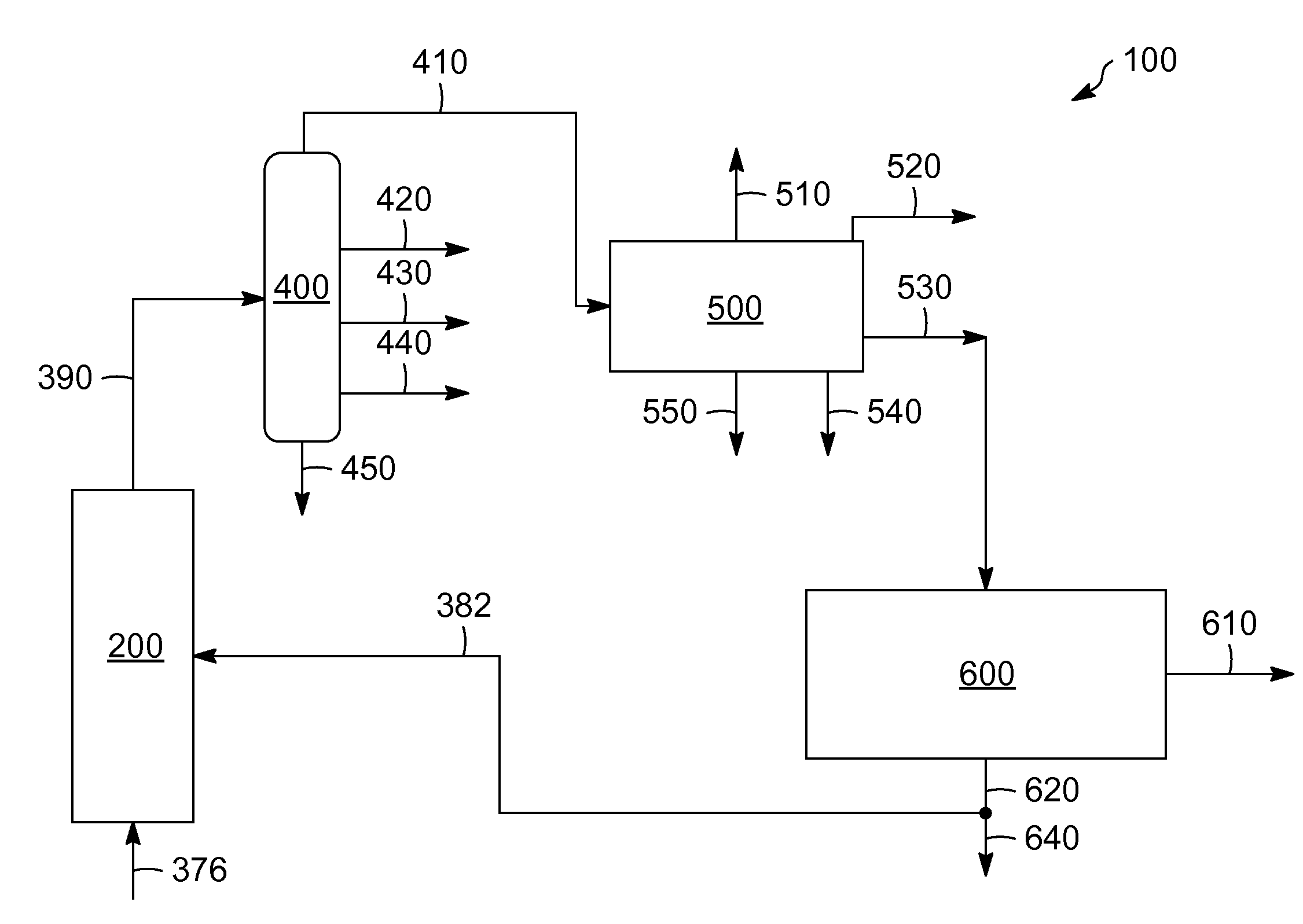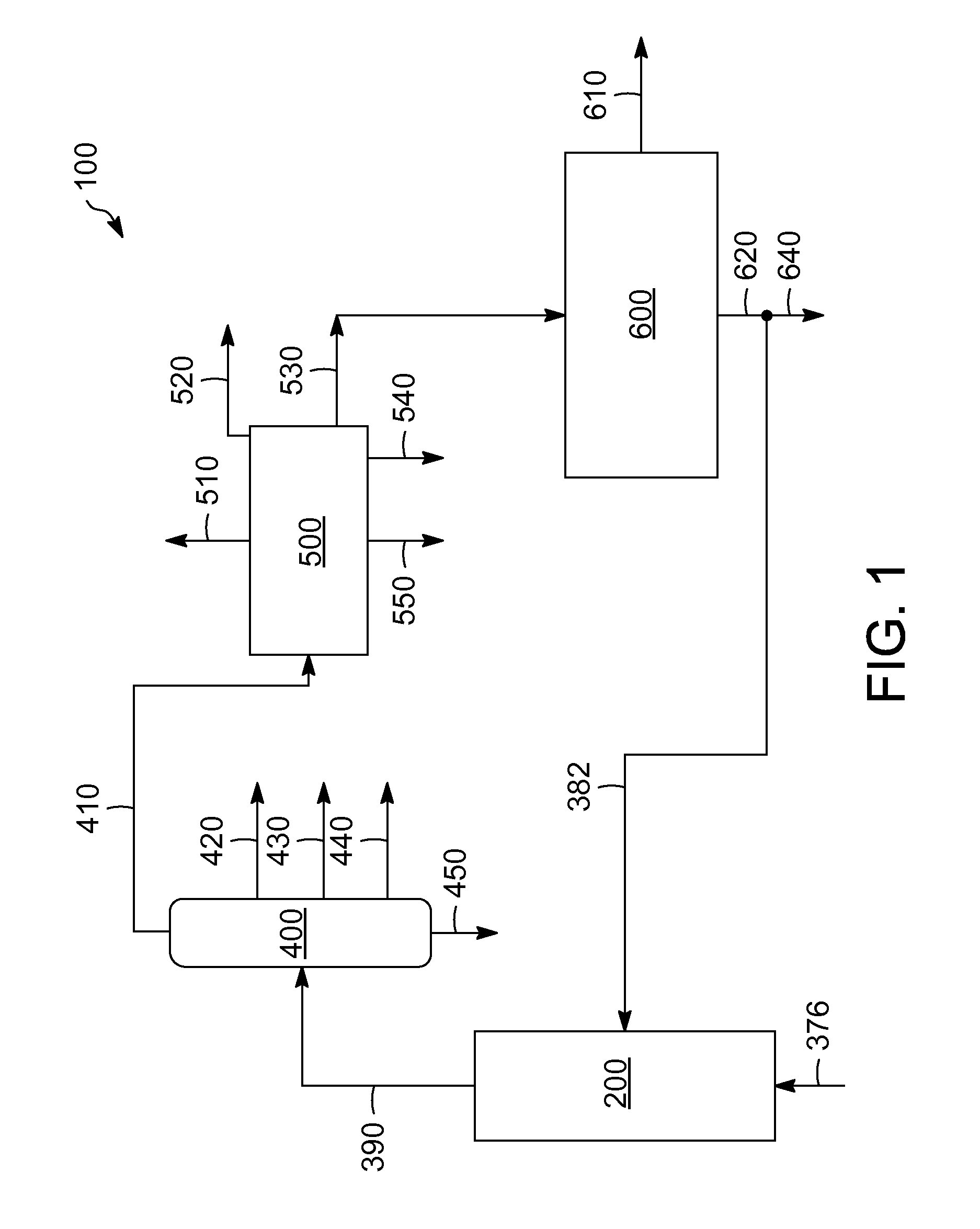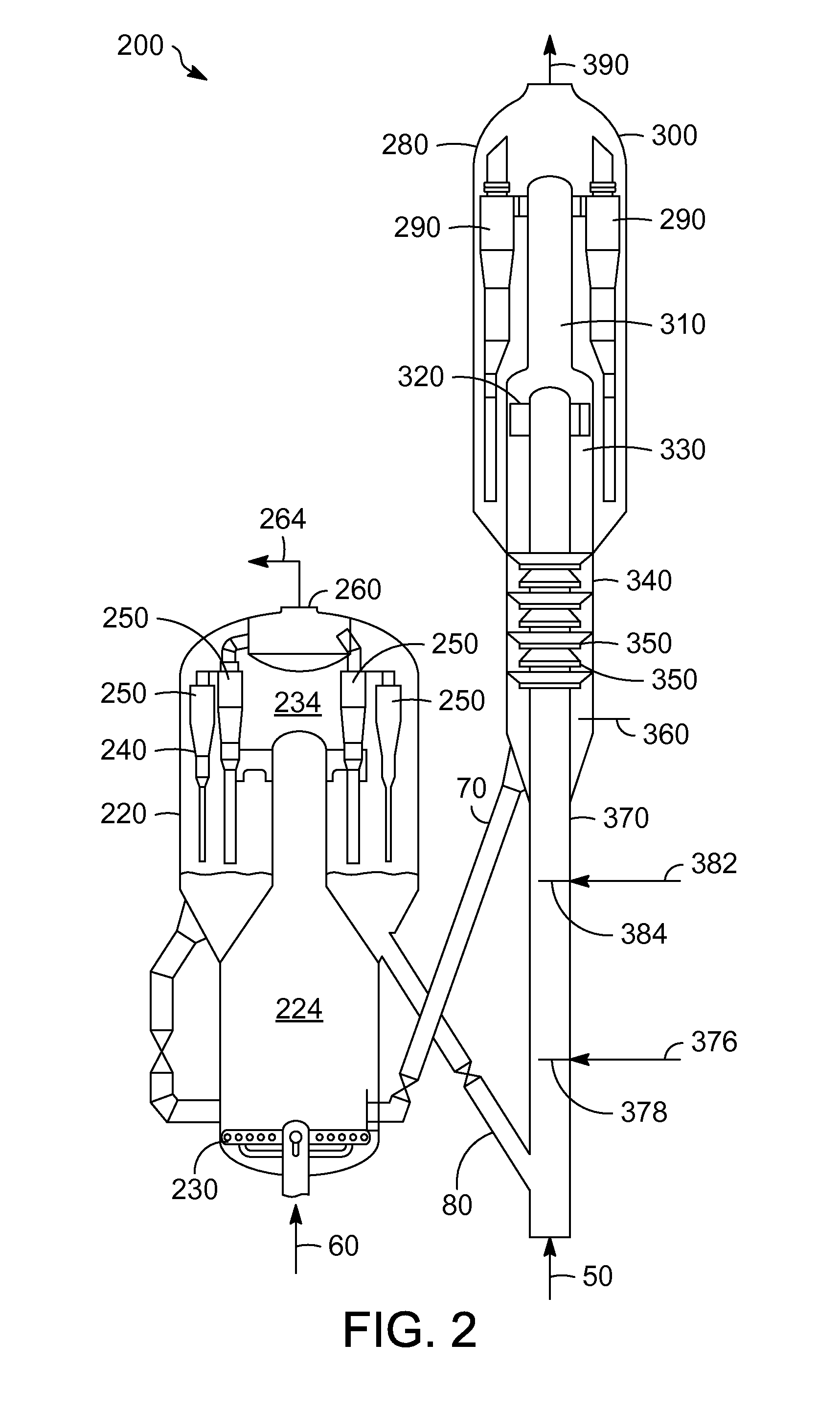Fluid catalytic cracking process
a fluid catalytic and cracking technology, applied in the field of fluid catalytic cracking, can solve the problems of high cracking rate, achieve the effects of shortening the residence time, high octane gasoline product selectivity, and high selectivity to both propene and/or
- Summary
- Abstract
- Description
- Claims
- Application Information
AI Technical Summary
Benefits of technology
Problems solved by technology
Method used
Image
Examples
example 1
[0058]Two runs are conducted with a feed of 1-octene at different residence times. The first run is conducted in a microreactor with two samples at a shorter residence time. The second run is conducted in a pilot plant with a sample at a longer residence time. Each of these runs utilize a feed of 1-octene and are conducted with a catalyst weight ratio of 90 / 10 of Y / ZSM-5 zeolite. The conditions are as follows:
TABLE 2ParameterRun 1Run 2Temperature, ° C.565565593Pressure, kPa11211238Residence Time (seconds)0.0480.0480.74
TABLE 3Reaction ResultsRun 1Run 2Conversion 1-Octene, wt %96.896.898.1Yields, wt %C3−2.42.57.3Propene26.326.522.6C4 (Alkane and Alkene)37.637.533.8C5-C727.227.025.11-Octene3.23.21.9Other C8+3.33.39.3
[0059]The data demonstrates higher yield (over 26% for Run 1 versus less than 23% for Run 2) for propene at short residence times when cracking 1-octene.
[0060]Two additional runs are conducted with a third feed of oligomerized product made by reacting one or more C4 hydroca...
example 2
[0065]Several oligomerization effluents are obtained from a pilot plant and tested in a fixed bed micro reactor system to simulate fluid catalytic cracking. The first oligomerization reaction effluent is obtained using a SPA catalyst (Sample A) and the second oligomerization reaction effluent is obtained using a catalyst including an MTT zeolite (Samples B and C). The first oligomerization reaction effluent is a blended material boiling greater than about 80° C. to obtain a Sample A. The second oligomerization reaction effluent is divided into Samples B and C with Sample B being a cut boiling greater than about 150° C. and Sample C being an unfractionated blend. Sample A has the following composition:
TABLE 7ComponentC6C7C8+Wt %1.390.7297.88
Sample B has the following composition:
TABLE 8ComponentC8C9+Wt %0.199.9
Sample C has the following composition:
TABLE 9ComponentButeneC5C6C7C8+BenzeneWt %0.070.040.231.2498.410.01
[0066]Each oligomerization reaction effluent is fed to a pilot plant u...
example 3
[0067]Five samples of oligomerization effluent are tested in a fluid catalytic cracking pilot plant under similar conditions. A Y-zeolite based equilibrium catalyst contains 12%, by weight, ZSM-5 zeolite. The feed to the fluid catalytic cracking pilot plant includes a vacuum gas oil with an oligomer recycle. The feed can also include 25%, by weight, of an oligomerization reaction effluent. The oligomerization reaction effluent can be produced from a SPA catalyst or a catalyst including an MTT zeolite. If the oligomerization reaction effluent is included, the oligomerization reaction effluent can be provided separately high or combined low with the vacuum gas oil on the riser. If provided high on the riser, then the oligomerization reaction effluent is reacted at a shorter residence time as compared to low on the riser. Thus, Sample D is a vacuum gas oil provided low on the riser. Sample E is a combined feed of a vacuum gas oil and 25%, by weight, of an oligomerization reaction efflu...
PUM
| Property | Measurement | Unit |
|---|---|---|
| Temperature | aaaaa | aaaaa |
| Temperature | aaaaa | aaaaa |
| Temperature | aaaaa | aaaaa |
Abstract
Description
Claims
Application Information
 Login to View More
Login to View More - R&D
- Intellectual Property
- Life Sciences
- Materials
- Tech Scout
- Unparalleled Data Quality
- Higher Quality Content
- 60% Fewer Hallucinations
Browse by: Latest US Patents, China's latest patents, Technical Efficacy Thesaurus, Application Domain, Technology Topic, Popular Technical Reports.
© 2025 PatSnap. All rights reserved.Legal|Privacy policy|Modern Slavery Act Transparency Statement|Sitemap|About US| Contact US: help@patsnap.com



